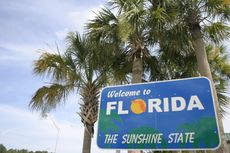How Much Does College Really Cost?
New tools help you get beyond the sticker price.
When it comes to predicting how much you’ll pay for college, you might as well consult your local fortuneteller or learn to read tea leaves. College promotional booklets publish sticker prices, which most students don’t pay. Financial aid letters rarely spell out how aid will change over four years or translate into monthly loan payments after graduation. Meanwhile, the price of college keeps rising, and student-loan default rates remain worrisome. To address the challenge of finding an affordable college education, politicians and educators are launching tools to shed light on the murky process.
One of the newest is the Department of Education’s College Scorecard . The Scorecard is a sleek, interactive site where you can search by state, school size and campus setting, among other criteria, to find potential schools.
See Our Slide Show: 10 Best Public Colleges With Lowest Debt at Graduation
Each college has its own page with five measurements of affordability and quality, including net cost (after grants and scholarships), graduation rate, loan-default rate and median amount borrowed. (The fifth measure, data on post-college employment, is slated to be added. Arkansas, Tennessee and Virginia already provide employment information for their grads.) A graphics-rich design is a student-friendly improvement over previous text-heavy federal tools. Meters and charts show how each school compares with its peers, and embedded links lead to net-price calculators on each school’s Web site.

Sign up for Kiplinger’s Free E-Newsletters
Profit and prosper with the best of expert advice on investing, taxes, retirement, personal finance and more - straight to your e-mail.
Profit and prosper with the best of expert advice - straight to your e-mail.
College administrators are also trying to make the cost of attendance more transparent. The University of Dayton, for example, has announced that next year’s incoming freshmen will receive a two-page “prospectus” detailing their billable expenses over four years, plus a pledge that aid will increase in line with tuition. In a pilot program launched this school year, the State University of New York system has adopted the standardized financial aid shopping sheet, developed by the Department of Education and the Consumer Financial Protection Bureau, and beefed up loan-counseling services at six campuses.
Price transparency is an increasingly popular notion in higher-ed circles, but experts say the current suite of tools needs tweaking before students get a truly clear picture. For instance, loan-default rates on the College Scorecard don’t mean much without knowing the percentage of students who borrow. And more schools would have to adopt Dayton’s prospectus model for it to become useful in weighing one offer against another. For now, the financial aid shopping sheet, which has been adopted by more than 600 schools nationwide, will go a long way toward helping students make apples-to-apples comparisons.
Another challenge for guidance counselors and parents is getting students to pay more attention to costs early on. Only 35% of prospective students used an online net-price calculator during their college search, reports a 2012 College Board study.
Kiplinger’s has always focused on value as well as quality when evaluating colleges, using data such as financial aid, graduation rates and average debt upon graduation to determine our college rankings.
Get Kiplinger Today newsletter — free
Profit and prosper with the best of Kiplinger's advice on investing, taxes, retirement, personal finance and much more. Delivered daily. Enter your email in the box and click Sign Me Up.
Susannah Snider worked as a research-reporter and staff writer at Kiplinger Personal Finance Magazine. She went on to serve as managing editor for money at U.S. News, overseeing articles and content covering real estate, personal finance and careers. She is a certified financial planner professional and earned her CFP marks in 2019.
-
 Did Florida’s Chance at $1,000 in Property Tax Rebates Vanish?
Did Florida’s Chance at $1,000 in Property Tax Rebates Vanish?State Taxes The Florida Legislature bypassed Gov. Ron DeSantis’ wish to cut property taxes and instead voted to lower the state’s sales tax.
By Gabriella Cruz-Martínez Published
-
 Wall Street Is Worried About Apple Stock. Should You Be Too?
Wall Street Is Worried About Apple Stock. Should You Be Too?Analysts expect Trump's sweeping tariffs to have an outsized impact on Apple stock. How concerned should investors be?
By Karee Venema Published
-
 The American Opportunity Tax Credit (AOTC): How Much Is It Worth?
The American Opportunity Tax Credit (AOTC): How Much Is It Worth?Tax Credits This tax break can help you offset $2,500 in qualifying expenses tied to your higher education. Here's what you need to know.
By Gabriella Cruz-Martínez Last updated
-
 How Intrafamily Loans Can Bridge the Education Funding Gap
How Intrafamily Loans Can Bridge the Education Funding GapTo avoid triggering federal gift taxes, a family member can lend a student money for education at IRS-set interest rates. Here's what to keep in mind.
By Denise McClain, JD, CPA Published
-
 How an Irrevocable Trust Could Pay for Education
How an Irrevocable Trust Could Pay for EducationAn education trust can be set up for one person or multiple people, and the trust maker decides how the money should be used and at what age.
By Denise McClain, JD, CPA Published
-
 UTMA: A Flexible Alternative for Education Expenses and More
UTMA: A Flexible Alternative for Education Expenses and MoreThis custodial account can be used to pay for anything once the beneficiary is considered an adult in their state. There are some considerations, though.
By Denise McClain, JD, CPA Published
-
 Coverdell Education Savings Accounts: A Deep Dive
Coverdell Education Savings Accounts: A Deep DiveWhile there are some limitations on income and contributions, as well as other restrictions, a Coverdell can be a bit more flexible than a 529 plan.
By Denise McClain, JD, CPA Published
-
 529 Plans: A Powerful Way to Tackle Rising Education Costs
529 Plans: A Powerful Way to Tackle Rising Education CostsContributions to 529 plans grow tax-free and are not taxed when they are used to pay for qualified educational expenses for the beneficiary.
By Denise McClain, JD, CPA Published
-
 Roth IRA Contribution Limits for 2025
Roth IRA Contribution Limits for 2025Roth IRAs Roth IRA contribution limits have gone up. Here's what you need to know.
By Jackie Stewart Last updated
-
 Four Tips for Renting Out Your Home on Airbnb
Four Tips for Renting Out Your Home on Airbnbreal estate Here's what you should know before listing your home on Airbnb.
By Miriam Cross Published